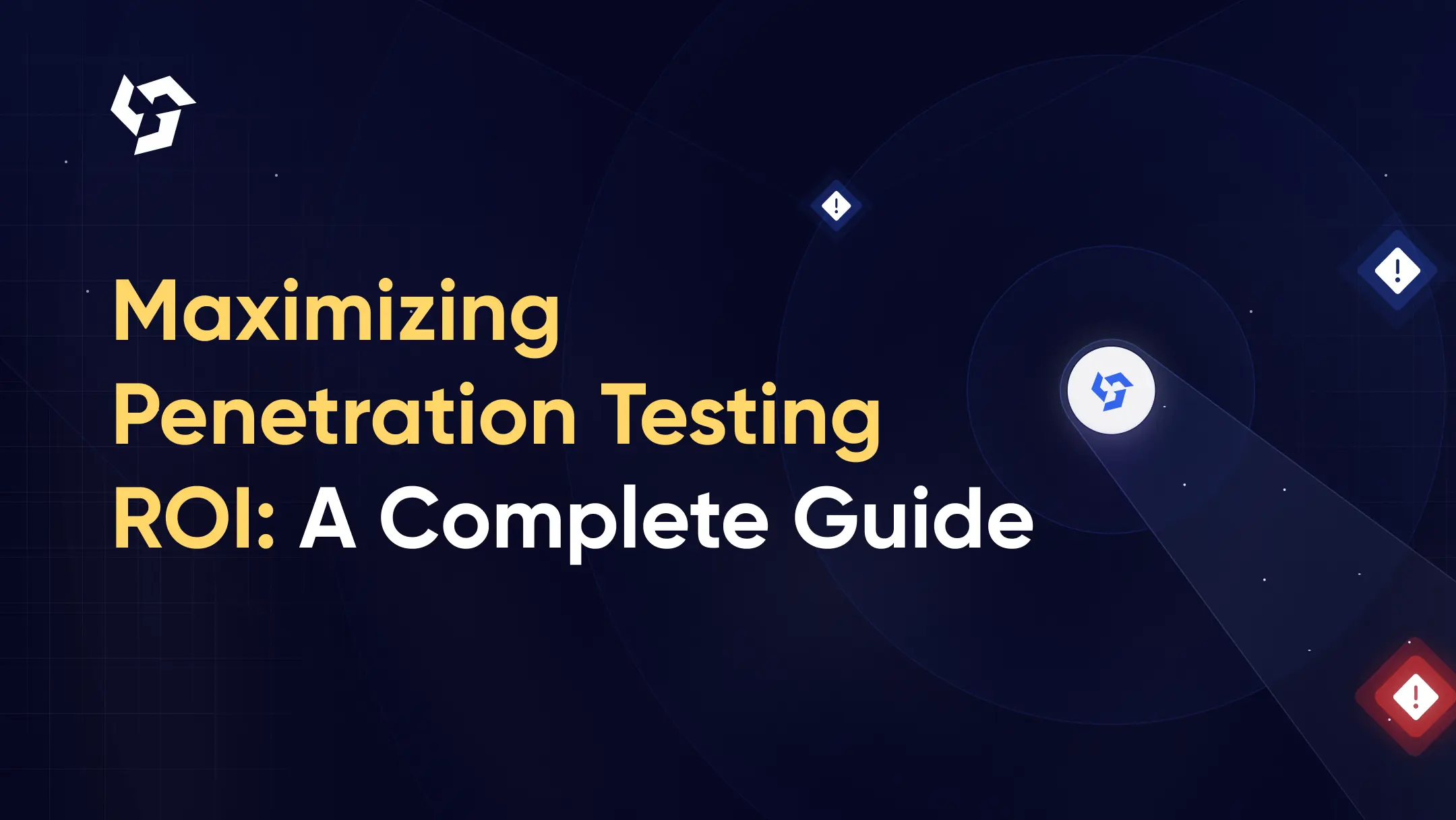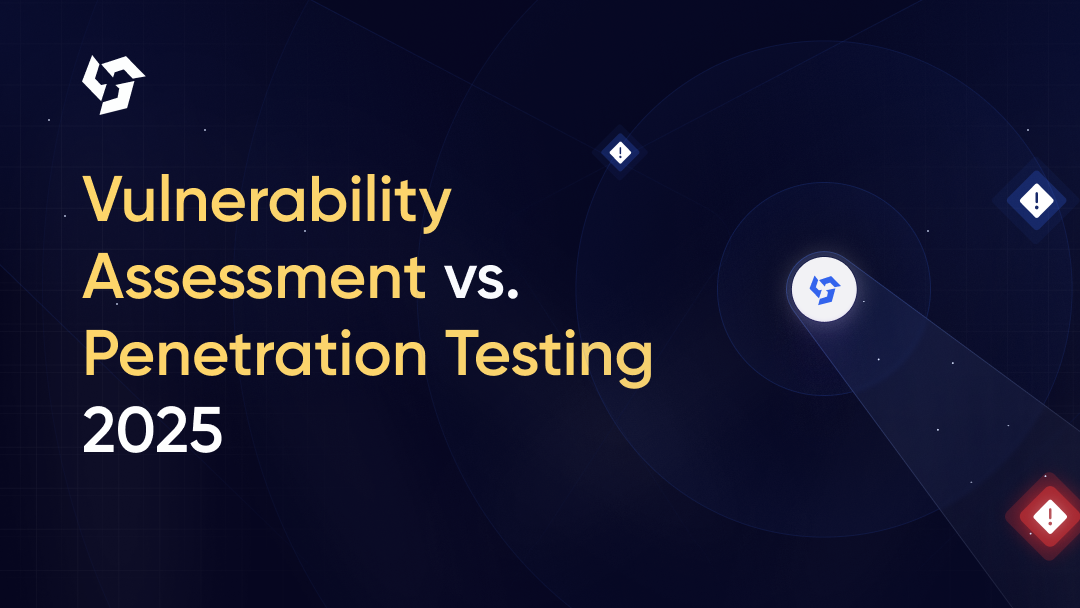Cyber fraud for e-commerce/D2C refers to the misuse of digital features like payments, orders, refunds, and user accounts. It includes fake transactions, loyalty abuse, refund manipulation, and account hijacking, often carried out through automation or overlooked workflows.
As platforms scale and prioritize seamless user experiences, complexity increases. Attackers often take advantage of trust-based flows, third-party tools, or logic gaps that aren’t designed with fraud in mind.
That’s why identifying fraud risks early is essential, to ensure systems stay resilient, customer journeys remain secure, and growth doesn’t come at the cost of oversight.
tl;dr: E-commerce fraud testing reveals real-world risks like account takeovers, refund abuse, fake COD orders, and promo exploits hidden in business logic and APIs. It’s critical before peak campaigns, product launches, or platform changes. A focused pentest simulates attacker behavior, uncovers logic flaws, and tests flows like checkout, referrals, and payments. AppSecure delivers fraud-aware, business-contextual pentests with actionable reports, safe testing methods, and support aligned to fast-moving D2C environments.
Common types of cyber fraud targeting e-commerce
Let’s first look at the most common types of cyber fraud that target e-commerce and D2C platforms today:
- Account takeover (ATO)
Account Takeover happens when an attacker gains unauthorized access to a legitimate user’s account, usually through credential stuffing, phishing, or brute-force attacks.
Once inside, they can change addresses, place high-value orders, or access stored payment methods. ATO is particularly damaging in D2C models where returning customers often have saved preferences, rewards, or past order history.
- Fake cash-on-delivery (COD) orders
In COD fraud, attackers place large volumes of fake orders using random or stolen contact details. These orders are rarely fulfilled, leading to inflated logistics costs and increased RTO (Return to Origin) rates.
For brands without strong address verification or order validation mechanisms, COD fraud can distort performance metrics and harm margins.
- Card testing attacks
Card testing is when attackers use automated bots or scripts to test stolen credit card numbers by making small purchases. E-commerce sites with unsecured checkout APIs or no transaction throttling become easy targets.
A successful test confirms the card is active, allowing the attacker to use it on other platforms or make larger fraudulent purchases.
- Payment phishing attack
In this, attackers trick users who have placed cash-on-delivery orders into transferring money to their UPI or bank accounts. The attacker already has access to order details, such as the buyer’s address, product, and amount, due to an order leak vulnerability in the e-commerce app.
Users believe they’re paying the correct party, while funds are being siphoned by fraudsters. This type of fraud exploits user trust and often goes undetected without security audits of order exposure points.
- Return and refund abuse
This involves exploiting loopholes in the return or refund policy. Attackers may return used or counterfeit items, claim false delivery failures, or trigger multiple refunds on a single purchase. Without order validation or fraud rules, this tactic can lead to inventory loss and policy abuse at scale.
- Loyalty point exploitation
Fraudsters often target reward programs by creating fake accounts, redeeming referral bonuses, or automating loyalty point farming. They may also take over genuine user accounts to drain points. If loyalty logic lacks proper limits, verification, or abuse detection, it can lead to financial loss and customer dissatisfaction.
- Promotion code misuse
Promo abuse happens when users exploit referral codes, discounts, or sign-up offers beyond their intended scope. This includes creating fake accounts to reuse welcome codes or sharing single-use links publicly. Weak rate limits and lack of promo logic validation often make this kind of misuse difficult to track.
- Phishing and social engineering
In these cases, attackers trick customers or support staff into revealing sensitive information, like login credentials, OTPs, or order details. Social engineering can also include fake support pages, scam calls, or impersonated emails.
While not a direct system breach, it still leads to fraud incidents that affect the brand’s reputation and users’ trust.
How cyber fraud impacts e-commerce/D2C business metrics?
Cyber fraud for e-commerce/D2C isn’t just a technical or operational issue, it directly impacts financial metrics, user retention, and brand perception. Here’s how:
- Increased chargebacks and operational costs
Fraud-driven transactions often lead to chargebacks, where payments are reversed by the bank after customer disputes. These come with non-refundable fees, increased fraud risk scores, and penalties from payment gateways.
On the backend, each disputed case requires manual review, fulfillment cancellation, and customer support involvement, which compounds operational workload and cost per order.
- Decline in customer trust and retention
When users experience unexpected activity, such as unauthorized orders, missing loyalty points, or suspicious account behavior, it reduces their confidence in the platform.
Even if the issue is resolved, the loss of perceived safety often leads to churn. This shows up as a decline in repeat purchase rate, lower customer lifetime value (CLTV), and decreased net promoter score (NPS).
- Revenue loss during high-traffic events
Peak periods like festive sales or major campaigns often see inflated fraud activity. While this may initially look like a spike in orders, backend systems face RTOs, canceled payments, and strain on logistics.
Without adaptive controls in place, this can result in revenue leakage, mismanaged inventory, and disrupted forecasting during business-critical cycles.
- Wasted Ad spend and skewed marketing metrics
Fraudulent signups and fake user activity distort campaign data and inflate acquisition costs. When referral systems or discount-based offers are exploited at scale, ad budgets are spent on non-converting traffic. This skews CAC (Customer Acquisition Cost), misleads attribution reports, and lowers overall ROAS (Return on Ad Spend).
- Erosion of brand reputation
Repeated fraud incidents, especially those that affect real users, can impact long-term brand equity. Public complaints, negative social media mentions, or support-related frustrations reduce trust across new and existing customers.
Over time, this affects retention, hiring, investor perception, and the brand’s ability to scale into new markets.
Red flags: Signs your e-commerce/D2C business might already be under attack
Even with strong systems in place, cyber fraud for e-commerce/D2C can silently operate in the background. That’s why early detection matters. Here are some red flags that could indicate your platform is already being targeted or tested for vulnerabilities:
- Unusual traffic or spike in failed logins
A sudden increase in failed login attempts, especially concentrated around certain user accounts or geographic regions, can signal credential stuffing or brute-force attacks. These are often carried out using automated bots that test leaked username-password combinations across login endpoints.
Even if login success is low, the activity stresses authentication systems and can lead to eventual account takeovers if not blocked early.
- High volume of abandoned carts or failed checkouts
Large spikes in add-to-cart events without corresponding purchases can point to bot activity or card testing attacks. Attackers often simulate real user behavior to avoid detection, adding multiple products before running stolen cards through checkout.
A pattern of failed payment attempts or repeated declines across small-value transactions should be investigated immediately for automation-driven abuse.
- Surge in refund requests or promo code redemptions
Anomalies in refund volumes or rapid redemption of discount codes could indicate refund abuse or promotional exploitation. Attackers may script checkout flows to test edge-case refund paths or mass-redeem limited-time offers across fake accounts.
If these patterns emerge shortly after a new promo launch or policy update, it’s often a sign that internal logic is being probed for gaps.
- Repeated small-value transactions
Numerous low-cost purchases made in quick succession, especially from the same IP range or user agent, can indicate card testing or loyalty point farming. These micro-transactions are designed to go unnoticed while validating payment methods or accumulating platform rewards.
They often bypass traditional fraud filters due to their low financial value but should still be flagged when frequency or pattern looks off.
Role of penetration testing in preventing e-commerce/D2C fraud
While fraud tools detect surface-level anomalies, they often miss deeper abuse hidden in business logic and workflows. Here’s how penetration testing uncovers and mitigates fraud risks across e-commerce systems:
- Business logic testing for refund and coupon loopholes
Penetration testers mimic abusive behavior within legitimate workflows, such as initiating multiple refunds, stacking coupons across sessions, or bypassing minimum order checks. These aren’t code-level flaws but logic inconsistencies in how your platform processes state, context, and user roles.
Testers validate whether refund conditions, promo expiries, and redemption thresholds can be manipulated via parameter tampering, header injection, or replaying signed URLs.
- Credential stuffing simulations and rate-limiting validation
To assess account security, testers run controlled credential stuffing attacks using breached username-password pairs. This helps identify whether login endpoints lack adaptive throttling, IP reputation filtering, or dynamic challenge mechanisms like CAPTCHA or device fingerprinting.
They also evaluate if failed logins are logged, monitored, and rate-limited based on session heuristics or velocity rules.
- Abuse testing of payment flows and checkout integrity
Payment flows are tested for race conditions, double submissions, and unvalidated transitions.
Pentesters attempt to replay successful transactions, bypass cart validations via direct API calls, or exploit inconsistent frontend-backend validation checks. They also test fraud filters for sensitivity to burst transactions, anomalous card metadata, and known testing BINs (Bank Identification Numbers).
- Session management, OTP flows, and token validation
Testers probe for weaknesses in how sessions and one-time credentials are issued, validated, and revoked. This includes checking if session cookies are HttpOnly, SameSite flagged, properly rotated post-login, and invalidated on logout. OTP flows are tested for time-based drift tolerance, brute-force resistance, and replay protection.
JWTs or bearer tokens are analyzed for signature flaws, predictable claims, or missing expiry checks.
- API and plugin-level exposure checks
Modern fraud activity often exploits overlooked API endpoints or misconfigured third-party plugins. Testers enumerate public and private APIs, attempting unauthorized cart manipulations, coupon triggers, or internal calls using tampered auth headers.
For plugins, assessments cover outdated SDKs, insecure callback implementations, and excessive permissions, common in loyalty, payment, or affiliate integrations.
How AppSecure’s can secure your e-commerce/D2C business
Although penetration testing reveals abuse paths, real-world e-commerce expertise is key to simulating how attackers operate. Let’s look at how AppSecure approaches security testing across modern storefronts:
- Deep testing for custom checkout flows and backend APIs
Many e-commerce platforms rely on highly customized checkout logic, involving dynamic pricing, promo stacking, or third-party payment orchestration. Our team performs deep manual testing across these flows, probing for race conditions, parameter tampering, and inconsistent backend validation.
We validate that client-server communications, especially in multi-step checkouts, cannot be manipulated to bypass key controls.
- Detecting edge-case abuse (e.g., returns, cart logic, referral hacks)
Cyber fraud for e-commerce/D2C often hides in low-frequency, high-impact behaviors, like triggering refund loops, manipulating cart quantity logic, or chaining referral codes across fake accounts.
AppSecure’s pentesting methodology includes testing these edge cases by simulating scenarios attackers use in the wild, uncovering vulnerabilities not flagged by automated tools or standard test scripts.
- Production-safe testing of real payment systems
For platforms where staging is not always in sync with production, our team uses safe, controlled methods to assess live payment workflows. We validate token expiration, transaction replay protections, and payment processor integrations without disrupting order flows or financial records, ensuring no impact on users or revenue.
- Reports that business and tech teams can act on
AppSecure delivers dual-layered penetration testing reports: technical details for engineering and actionable insights for business teams.
Each finding is tied to its potential impact on fraud metrics, be it revenue leakage, promo abuse, or account misuse, helping clients fix quickly, align teams, and strengthen long-term fraud posture.
Best practices to reduce fraud risk for e-commerce/D2C stores
Preventing fraud at scale means embedding defense mechanisms into both code and operational workflows. Below are key practices that reduce risk across infrastructure, user flows, and support operations:
- Regular pentesting and abuse case simulations
Beyond standard vulnerability assessments, schedule targeted penetration tests focused on abuse vectors, such as promo code replays, referral farming, or cart manipulation via API calls. Include business logic testing to uncover authorization bypasses and misaligned user flow validations.
Simulations should mimic real-world attack paths, especially on checkout, refunds, and loyalty systems, where fraud typically hides.
- Strong WAF and bot detection controls
Configure your Web Application Firewall to actively monitor rate limits, anomaly patterns, and input tampering across high-risk endpoints (login, checkout, coupon apply).
Combine this with bot mitigation tools that use behavioral analytics, fingerprinting, and CAPTCHA enforcement to detect scripted automation, even when user agents are spoofed. Ensure detection thresholds are dynamic to handle campaign traffic spikes without losing protection.
- Secure session and OTP handling
Use HttpOnly, Secure, and SameSite attributes for session cookies to prevent XSS and CSRF-based hijacks. Implement short TTLs (Time-to-Live) for OTPs, restrict retry attempts, and bind OTP validity to specific sessions or IP addresses.
Invalidate tokens on logout, across multiple devices, or after suspicious activity to prevent replay or session reuse.
- Logging, monitoring, and alerting fraud signals
Instrument key actions, such as failed logins, multiple refund requests, or repeated cart modifications, with structured, timestamped logs. Feed this telemetry into SIEM platforms or fraud detection engines with defined thresholds for triggering alerts.
Use correlation rules across IP addresses, device IDs, and email domains to detect fraud rings or abuse clusters.
- Educating support teams to detect scams
Support agents often face phishing, social engineering, or scripted refund fraud. Train them to identify red flags such as urgency-based language, repeated refund requests from similar accounts, or mismatched delivery metadata.
Implement secure agent tooling, like customer identity verification steps and access role segregation, to reduce the risk of internal fraud or accidental data disclosure.
Fraud prevention requires a security-first approach
To sum up, fraud in e-commerce isn’t just a security gap, it’s a business risk that affects revenue, trust, and long-term growth. Attackers constantly look for logic flaws, weak controls, and overlooked workflows to exploit.
That’s why regular, fraud-focused penetration testing is essential. It helps teams find and fix abuse paths, across payments, refunds, promos, and APIs, before they’re used against the platform.
If you’re scaling operations or planning a high-traffic launch, connect with AppSecure for a tailored assessment built specifically for modern e-commerce and D2C ecosystems.
FAQs
- Does AppSecure test business logic risks like promo or refund abuse?
Yes, AppSecure simulates real-world abuse to detect logic flaws in promo codes, refund flows, referral systems, and loyalty programs.
- Will penetration testing affect my live e-commerce platform?
No, we use production-safe testing techniques or staging environments to ensure there’s no disruption to live users or transactions.
- How often should fraud-focused testing be done?
Ideally once a year, or after key changes, like launching new payment flows, updating APIs, or during major campaigns or sales periods.
- How long does a typical e-commerce fraud pentest take?
Most projects take 5 to 10 business days, depending on the number of flows, API integrations, and business logic paths involved.
- Does AppSecure offer a free retest after fixes?
Yes, we include one complimentary retest to validate that all identified issues have been properly fixed and are no longer exploitable.

Ankit Pahuja is a B2B SaaS marketing expert with deep specialization in cybersecurity. He makes complex topics like EDR, XDR, MDR, and Cloud Security accessible and discoverable through strategic content and smart distribution. A frequent contributor to industry blogs and panels, Ankit is known for turning technical depth into clear, actionable insights. Outside of work, he explores emerging security trends and mentors aspiring marketers in the cybersecurity space.


.png)
































.png)
.png)

.png)
.png)
.png)
.png)
.png)
.png)

.png)
.png)







.png)
.png)
.png)
.png)

.png)
.png)
.png)

.png)
.png)
.png)
.png)
.png)

.png)









.webp)





.webp)


.webp)

.webp)



.webp)

.webp)
.webp)

.png)




.webp)
